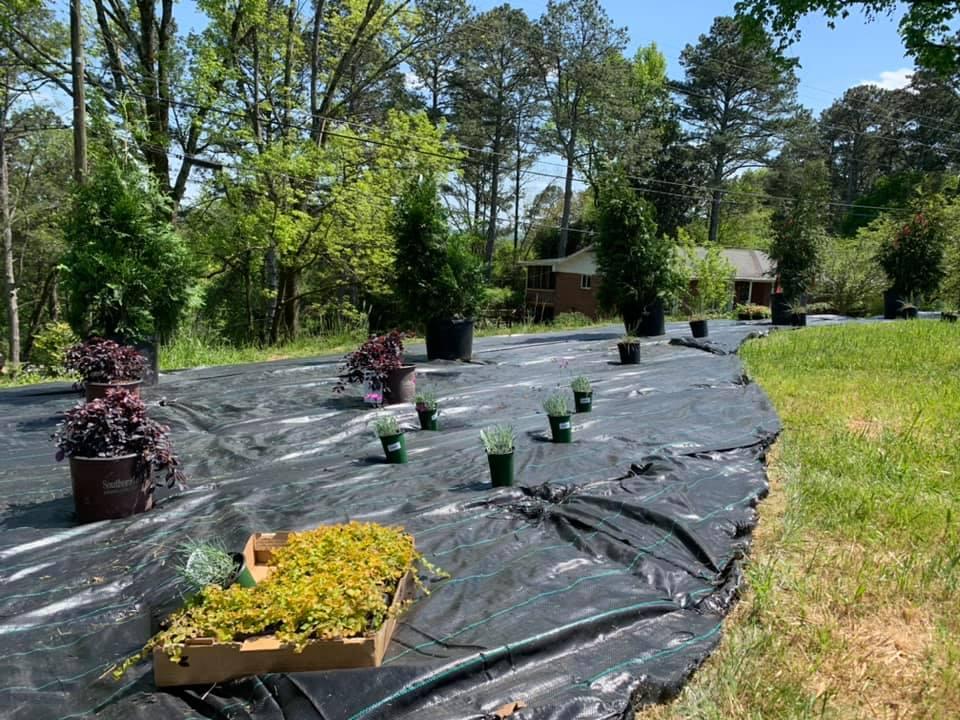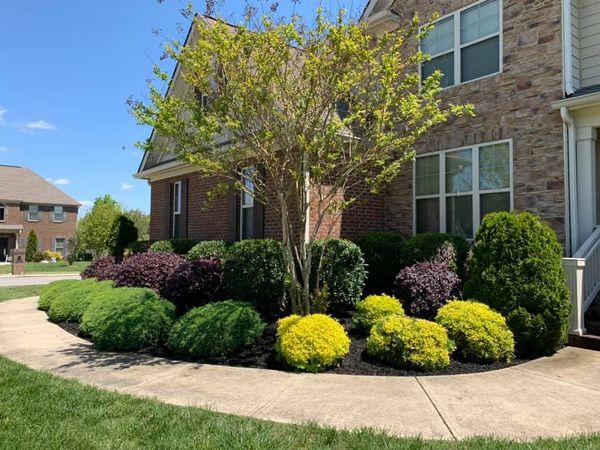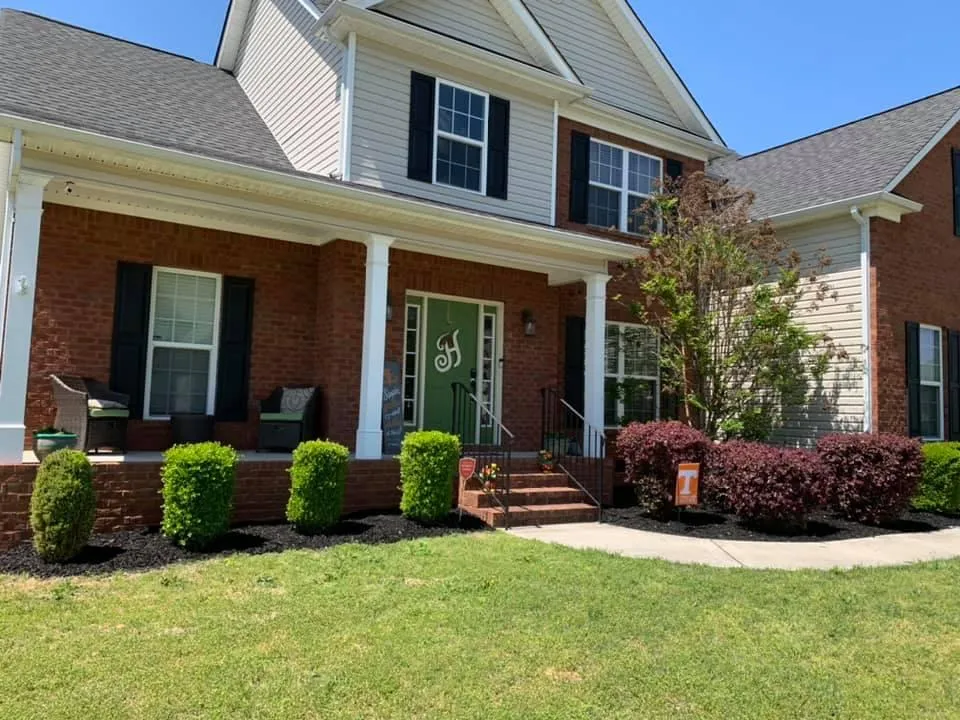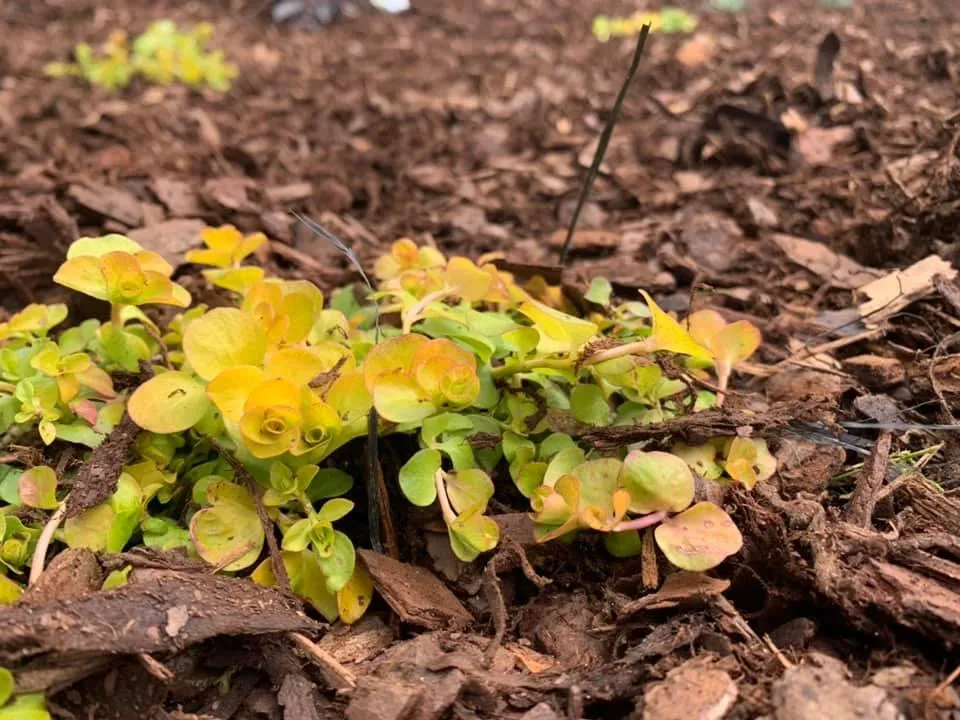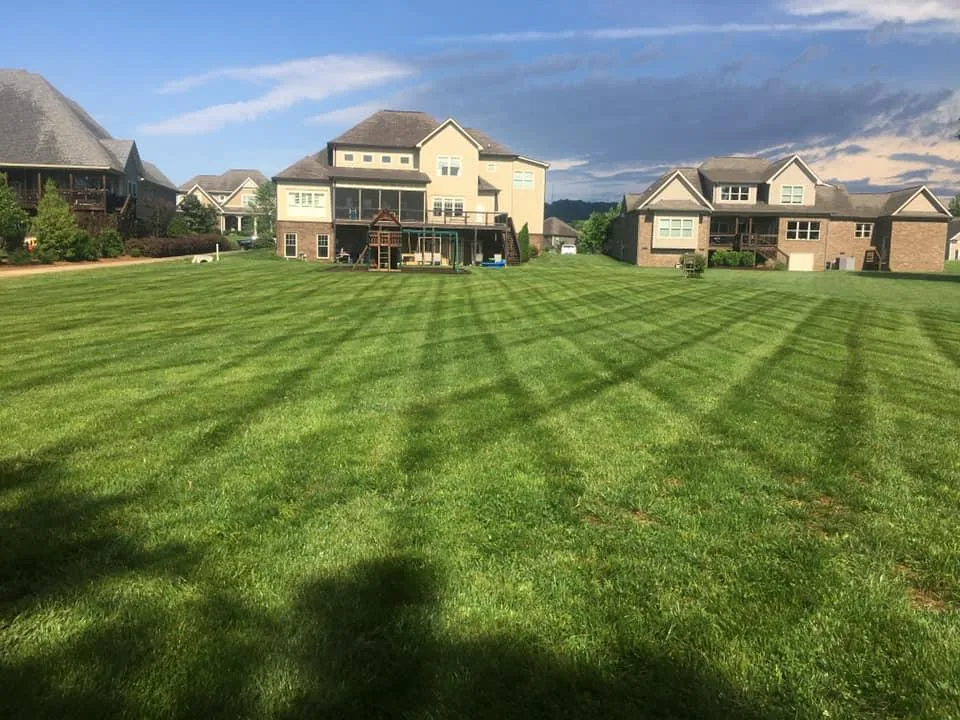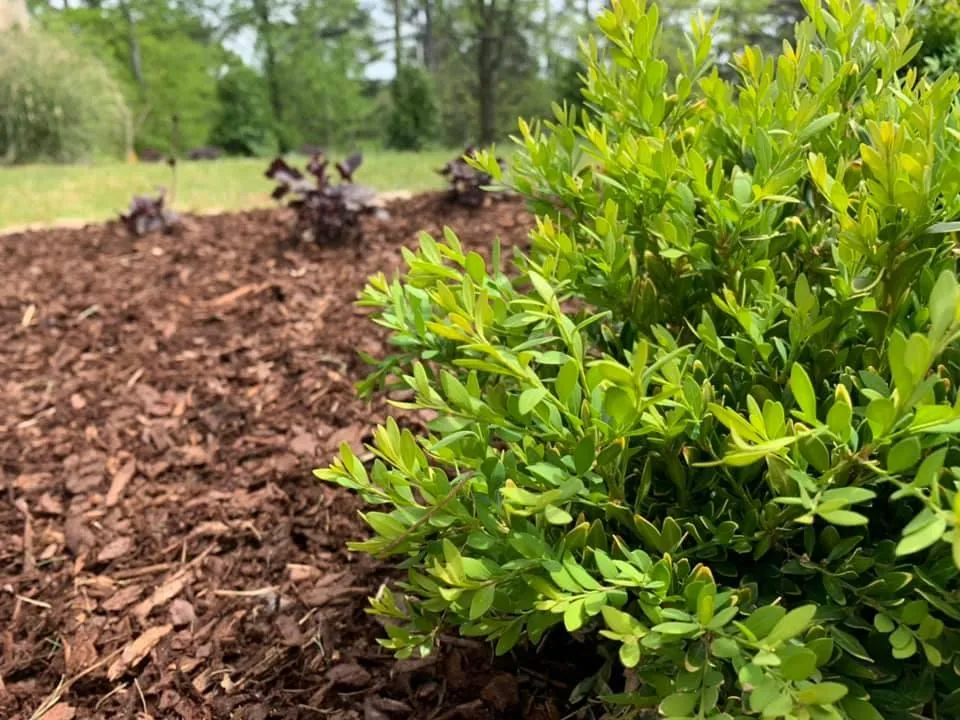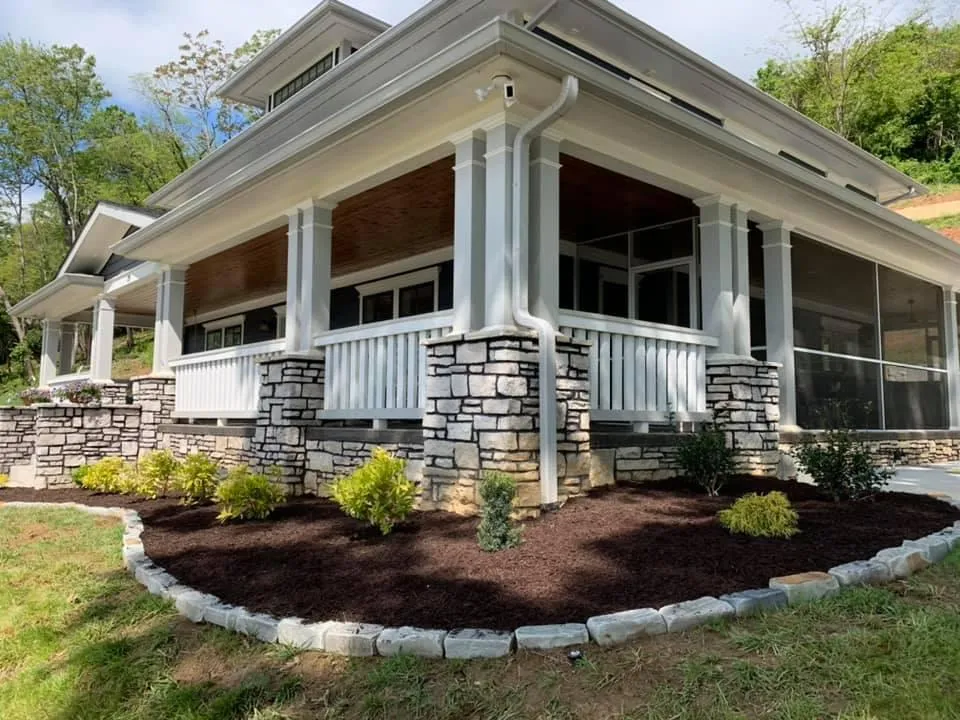5 Star Rating

Over 25 Reviews
Lawncare Has Never Been Simpler!
Online Billing. Texting. Never been easier!
Tree and Shrub Trimming Services
7+ Years
Lawncare Experience
15+ Years
Customer Service Experience
100%
Licensed and Insured
100%
Locally Owned
About Our Tree and Shrub Trimming Services
Expert Trimming for Healthy, Beautiful Outdoor Spaces
Proper care of your trees and shrubs is essential for a healthy and attractive landscape. New Day Landscaping offers professional tree and shrub trimming services that not only improve the appearance of your plants but also promote healthy growth and prevent potential hazards. Our team ensures that each trim is performed with precision and care, helping your trees and shrubs thrive.
Healthy Growth: Encourages strong, vibrant plants.
Disease Prevention: Reduces the risk of plant disease.
Aesthetic Appeal: Keeps your landscape looking tidy.
Experienced Team: Skilled professionals handle every trim.
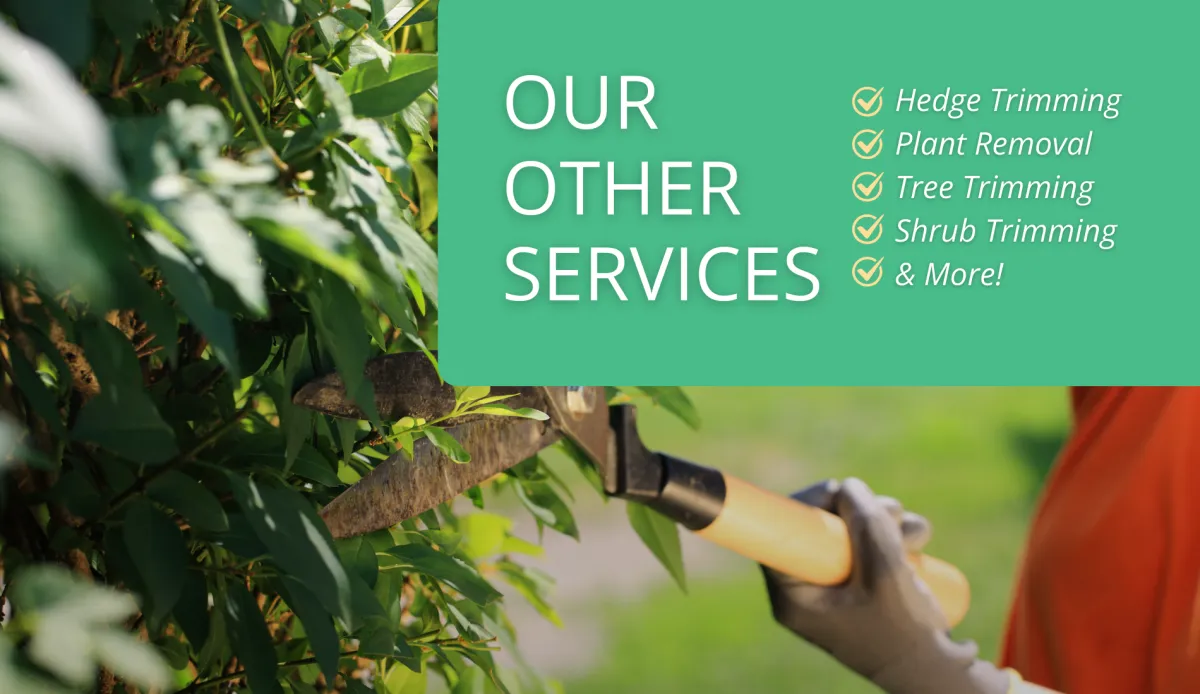
Why Choose New Day Landscaping
Expert Trimming for Healthier Texas Trees and Shrubs
New Day Landscaping’s tree and shrub trimming services are designed to enhance the health and beauty of your landscape. We approach each trimming job with the goal of promoting growth and preventing disease, ensuring your trees and shrubs remain vibrant and well-maintained.
Experienced Team: Over 7 years of expertise.
Experienced Trimmers: Skilled in promoting plant health.
Health Focused: Prevents disease and encourages strong growth.
Aesthetic Appeal: Keeps your landscape neat and attractive.
Customer Commitment: We treat your plants with the care they deserve.
Proven Results: Trusted by over 200 customers.
Frequently Asked Questions
Shrub Trimming Services in Fort Worth, TX | New Day Landscaping
Expert Shrub Trimming for a Beautiful and Healthy Landscape in Fort Worth!
About Us:New Day Landscaping provides top-quality shrub trimming services in Fort Worth, TX, and the surrounding areas. Our experienced team specializes in precise shrub and tree trimming, ensuring your landscape remains neat, healthy, and visually appealing. With our expertise, your shrubs will be pruned to perfection, promoting healthy growth and enhancing the overall look of your outdoor space.
We proudly serve Fort Worth and surrounding communities such as Benbrook, Crowley, and Overton Park. Our shrub trimming services are tailored to meet the unique needs of each property, keeping your landscape in pristine condition all year round.
1830 Washington St, Fort Worth, TX 76104
Phone Number: (817) 555-1234
Monday, 8AM–5PM
Tuesday, 8AM–5PM
Wednesday, 8AM–5PM
Thursday, 8AM–5PM
Friday, 8AM–5PM
Fort Worth, TX, is a thriving city that blends history, culture, and beautiful outdoor spaces. With numerous parks and green areas such as the Fort Worth Botanic Garden and Trinity Park, the city offers many opportunities for outdoor enthusiasts to enjoy nature. The surrounding areas of Benbrook, Crowley, and Overton Park add to the charm of the region with their suburban appeal. New Day Landscaping proudly provides shrub trimming services that help maintain the lush landscapes of Fort Worth and its neighboring communities.
New Day Landscaping
1830 Washington St, Fort Worth, TX 76104
Head west toward Washington St
154 ft
Turn right onto Washington St
0.2 mi
Turn left onto E Main St
0.5 mi
Turn right onto Broad St
0.5 mi
Turn left onto W 10th St
269 ft
Turn right
98 ft
Fort Worth
Texas
- Lawn Care Service
- Landscaping Service
Benbrook, Crowley, Overton Park
76102, 76103, 76104, 76107, 76109, 76110, 76111, 76112, 76115
Westover Hills, Rivercrest, TCU, Arlington Heights, Fairmount
Relax, Your Lawn Is In Good Hands
Free Estimates, most in 24 hours!
We know there are a number of reasons people seek professional help with their lawn. Spend more time with the kids or save yourself the bodily wear and tear – we’ve got you!
What Our Customers Are Saying
Other Services
Recent Posts

Fall Fertilization for Texas Lawns: A Fort Worth Landscaper's Take on Northern Advice
As someone who's been caring for Bermuda, St. Augustine, and Zoysia lawns across Fort Worth, Benbrook, and Crowley for years, I've learned that fall fertilization advice from up north doesn't always translate to Texas. I'm Cole A from New Day Landscaping, and after working with over 100 local families, I can tell you that our warm-season grasses need a completely different approach than what works for cool-season lawns.
I recently watched a video from The Lawn Lover about fall fertilization, and while the advice is solid for cool-season grasses in places like Indiana, here in Texas we're dealing with a fundamentally different situation. Let me break down what actually works for Fort Worth lawns.
Why Fall Fertilization is Different in Texas
The video talks about feeding lawns heavily before the ground freezes to help them bounce back in spring. That makes perfect sense for cool-season grasses like fescue and bluegrass that go dormant from cold. But here in Fort Worth, our Bermuda and St. Augustine grasses are fundamentally different plants with different needs.
Our warm-season grasses aren't gearing up for a growth spurt in fall - they're winding down for winter dormancy. This changes everything about timing, fertilizer ratios, and what we're trying to accomplish during these cooler months.
After maintaining lawns throughout Tanglewood, Overton Park, and Riverside for years, I've seen what happens when people follow northern advice too closely. Pushing heavy nitrogen late in the season when your Bermuda wants to go dormant can actually make it more susceptible to freeze damage.
Understanding Your Texas Grass Cycle
Here's what I always explain to my clients - your Bermuda grass is supposed to slow down in fall. It's not like the cool-season grasses up north that get a second wind when temperatures drop. Our grasses are preparing for dormancy, and we need to work with that cycle, not against it.
St. Augustine holds its color a bit longer than Bermuda, but it's still slowing down once we start seeing consistent temperatures in the 60s. Zoysia is somewhere in between. All three are warm-season grasses that need a Texas-specific approach to fall care.
The NPK Analysis - What It Means for Texas Lawns
The video makes a great point about ignoring marketing and focusing on the NPK numbers (nitrogen-phosphorus-potassium) on fertilizer bags. That part applies everywhere, including Texas. You need to know what's actually in the bag, not just what the label claims it'll do.
But here's where Texas differs - while northern lawns might benefit from high nitrogen in fall (like the 24-28% nitrogen mentioned in the video), that's exactly what you DON'T want for dormancy-bound Bermuda or St. Augustine.
For Texas lawns in late fall, I'm looking at lower nitrogen and higher potassium. Something like a 3-1-2 or 4-1-2 ratio works better for our situation. The potassium helps with winter hardiness and sets your grass up for faster spring green-up without pushing unwanted growth when the plant wants to shut down.
Timing Your Fall Applications in Fort Worth
The video mentions October and November applications, and the timing piece is actually similar for us, but with different goals and products. Here's how I typically schedule fall fertilization for Fort Worth lawns:
Late August/Early September: Final summer feeding while grass is still actively growing in the heat. This is your last high-nitrogen application.
October: Pre-dormancy feeding with lower nitrogen, higher potassium. This is when we're helping the grass prepare for winter, not trying to push growth.
November: Usually just clean-up and final mowing before dormancy hits. Most feeding is done by this point.
Our unpredictable Texas weather means you've got to stay flexible. We might have 90-degree days in October or an early freeze in November. I'm constantly watching weather patterns and soil temperatures to time applications right.
Soil Testing - Critical for Texas Clay
One thing the video nails is the importance of soil testing. This is even more critical in Texas because of our alkaline clay soil. What works for someone's lawn in Benbrook might need adjustment for a property in Crowley because soil conditions can vary even within the Fort Worth area.
Our clay soil tends to be high in phosphorus but often lacks other nutrients. It's also typically alkaline, which can cause iron deficiency in St. Augustine. A proper soil test tells you exactly what your specific lawn needs rather than guessing.
I always recommend soil testing to my clients because it saves them money in the long run. You're only applying what your lawn actually needs instead of throwing down products that might not help or could even cause problems.
Root Development - Where Texas and Northern Advice Align
Here's something the video mentions that absolutely applies to Texas lawns too - root growth stimulants can make a real difference. While our grasses are preparing for dormancy above ground, encouraging deeper root development during fall actually helps a lot.
Products that stimulate root growth help your Bermuda or St. Augustine develop a stronger root system that'll survive winter better and emerge healthier in spring. Deeper roots also mean better drought tolerance next summer, which matters a lot in Texas.
I've had good success pairing my fall potassium applications with root stimulants. The combination seems to really help with spring recovery and overall lawn health going into next season's heat and stress.
What About Phosphorus for Texas Lawns?
The video mentions using starter fertilizer (high in phosphorus) based on soil test results. This is one area where you need to be careful in Texas. Our clay soil is often naturally high in phosphorus, so adding more might not help and could even contribute to environmental problems.
If your soil test shows you're actually deficient in phosphorus (which is less common here than up north), then yes, addressing that makes sense. But don't assume you need it just because you're overseeding or doing fall feeding. Let the soil test guide you.
This is another reason why local expertise matters. A landscaper who works specifically in Fort Worth understands our typical soil profiles and what's likely to be needed versus what's probably already sufficient.
The Pre-Emergent Question for Texas
The video mentions applying pre-emergent (Prodiamine) in fall to get ahead of spring weeds. This is actually good advice for Texas too, but with some timing considerations specific to our climate.
For winter annual weeds like henbit, chickweed, and annual bluegrass, getting pre-emergent down in fall (usually October or November) prevents them from germinating when our winter temperatures are still relatively mild. We don't get the deep freeze that northern states do, so winter weeds can be a real problem in Texas lawns.
However, if you're overseeding your Bermuda (which some people do for winter color), you need to time this carefully. Pre-emergent will prevent your ryegrass seed from germinating just like it prevents weeds.
Weed Control in Fall - Texas Style
The video's advice about applying broadleaf herbicides in fall is solid for Texas too, with one consideration - you want to do this while your Bermuda or St. Augustine is still somewhat active, not after it's fully dormant.
Early to mid-fall is the sweet spot for hitting broadleaf weeds in Texas lawns. The weeds are still actively growing and taking in herbicide, but your grass is tough enough to handle the application without stress. Plus, you're knocking out the weeds before they set seed for next year.
I typically recommend targeting weeds in September or early October here in Fort Worth. By late November, your Bermuda is likely too dormant to worry about weed control, and you're better off waiting until spring green-up.
Common Fall Fertilization Mistakes I See
After working with over 100 families in the Fort Worth area, I see the same mistakes repeatedly:
Following northern advice too closely: Using high-nitrogen "winterizer" products designed for cool-season grasses on dormancy-bound Bermuda.
Fertilizing too late: Applying nitrogen when grass is trying to shut down for winter.
Skipping soil tests: Guessing at what your lawn needs instead of knowing for sure.
Overwatering after application: Our clay soil doesn't need as much water as you'd think, and overwatering can cause problems.
Ignoring weather patterns: Not adjusting timing based on when dormancy is actually happening in a given year.
What I Actually Recommend for Fort Worth Lawns
Here's my typical fall program for Bermuda and St. Augustine lawns in the Fort Worth area:
Late August/Early September: Last summer feeding with balanced fertilizer while grass is still actively growing.
Early-Mid October: Pre-dormancy feeding with 3-1-2 or 4-1-2 ratio (lower nitrogen, higher potassium), often paired with root stimulant.
Late October/Early November: Pre-emergent application if needed for winter weed control.
Throughout fall: Broadleaf weed control as needed while grass is still somewhat active.
This schedule gets adjusted based on weather patterns, when we actually hit dormancy, and what each specific lawn needs based on soil testing.
The Long-Term View
One thing the video emphasizes that I completely agree with - what you do in fall sets up next year's success. Proper fall care means faster spring green-up, better drought tolerance next summer, and overall healthier turf through the brutal Texas heat.
With our 95% retention rate at New Day Landscaping, I've learned that clients appreciate understanding the "why" behind fall lawn care. When you know that you're helping your Bermuda store energy and nutrients for winter, not trying to push growth, it makes more sense why Texas approaches differ from northern advice.
The key is working with your grass's natural cycle. In Texas, that means helping warm-season grasses prepare for dormancy, not treating fall like a second spring the way you would with cool-season grasses up north.
Ready to Prepare Your Texas Lawn the Right Way?
Fall fertilization in Fort Worth requires understanding the specific needs of warm-season grasses and how they differ from the cool-season lawns you'll see in northern states. The right approach means lower nitrogen, higher potassium, proper timing based on local weather patterns, and always starting with a soil test to know what your specific lawn actually needs.
At New Day Landscaping, we've helped over 100 local families maintain healthy Bermuda, St. Augustine, and Zoysia lawns using strategies specifically designed for North Texas conditions. We offer competitive prices and believe in working together long-term, which means we understand your lawn's seasonal patterns and what it takes to set you up for success year after year.
If you're ready to give your lawn the proper fall care it needs to survive dormancy and come back strong next spring, we'd love to help. We serve homeowners throughout Fort Worth, Benbrook, and Crowley, and we know exactly what works in our local conditions. Contact us today at (817) 760-0479 to schedule your consultation!
Limited Space. Call Today!
No Obligation & No Spam, ever!
About Us
At New Day Landscaping, we are dedicated to transforming outdoor spaces with comprehensive, eco-friendly lawn care and landscaping services. Serving over 100 local families with a 95% client retention rate, we offer customized solutions that cater to the unique needs of each property. Our services range from precise lawn mowing and expert irrigation to detailed tree trimming and durable hardscaping. With a commitment to excellence and backed by over 25 five-star reviews, we strive to create beautiful, thriving landscapes that enhance the beauty and value of your home.
© 2024 New Day Landscaping. All Rights Reserved | Terms of Service | Privacy Policy | Brand | Sitemap

